Curator: Fatos Ustek
Artists: Nevin Aladag, Isil Egrikavuk, Ayse Erkmen, Esra Ersen, Ozlem Gunyol & Mustafa Kunt, Emre Huner, Sefer Memisoglu, Erinc Seymen, Asli Sungu
2. November 2008 : Kunstmuseum Bern, Switzerland
http://www.kinokunstmuseum.ch/content/read/thema169.html
4. November 2008 : Kunsthalle Basel, Switzerland http://www.kunsthallebasel.ch/events/filme#341
Program:
19:00 Opening Speech
19:20 – 20:20
Ayse Erkmen – Coffee, 2007
Coffee is revealing a session of coffee reading of the artist’s future in a highly symbolic and metaphorical sense, where the artist is trying to associate people, events and spaces through what she hears.

Nevin Aladag – Voice Over, 2006
Voice over is a compilation of sounds that Aladag has collected in Berlin. The songs sang by youngsters of lyrical associations appear on the same level of the sounds produced by wind or rain.
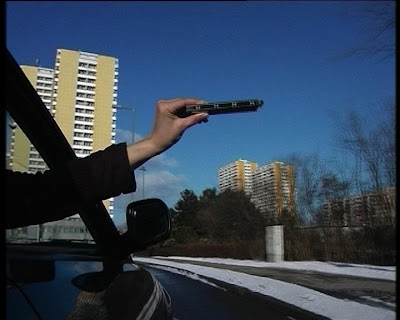
20:20 – 20:35 Break
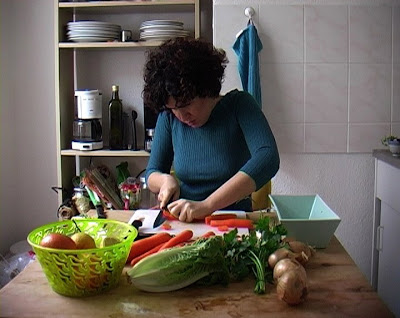
video still: Faulty Salad Dressing, 2008
20:35 – 21:35
Asli Sungu – Faulty Window Cleaning, 2008
The piece displays the processes of perfection on house-holding. Window cleaning is one of the four series of videos Sungu has produced on the challenge she takes in order to fulfill what is expected from a woman.
Ozlem Gunyol & Mustafa Kunt – Section 1, 2005
The artists are recapturing scenes from a movie by Zeki Demirkubuz, titled Itiraf. The dialogue taken from the scenes of a break up of a young couple is fully taken in Section 1.

Sefer Memisoglu, Rendering Rome, 2008
Sefer Memisoglu works with film within the genre of film-making and video art. Memisoglu’s pieces provide a filmic experience whereas the continuity is mapped with contextualisation of existences. Rendering Rome is a prologue to a city in itself and as such. Today’s cities are rather megalopolises where they function as a hub of movement and encounter. In Rendering Rome, we gaze at an idea of a city like an object of some sort. The city is like an entity that belongs to us, that gets cleaned, polished, and ready to host the activities within. The tramways rendered through the night not only enable continuity of movement but also the pace of living. The night and the day of the city appear as a duality with the seen and the unseen, the visible and the invisible through the positioning of subjectivities. Rendering Rome positions the city more than a mere container of inhabitants but an activation ground of subjectivities.
Additionally, although the piece has been produced in Netherlands, it is titled in reference to another city: Rome, the first city that has been ever planned in human civilisation. The piece connects the idea of the first city and projects on today via abstraction of movement and free associations.
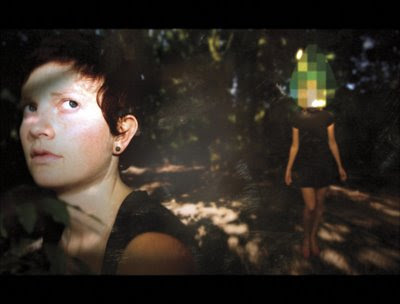
Erinc Seymen – Take #1, 2006
The piece is constructed by various camera angles from various cameramen. The person in the middle of all the action is wearing a mask and a dress. The whole is somehow indefinable, uncanny: the gender of the marked person, the reason of shooting his image in a dark loft,...
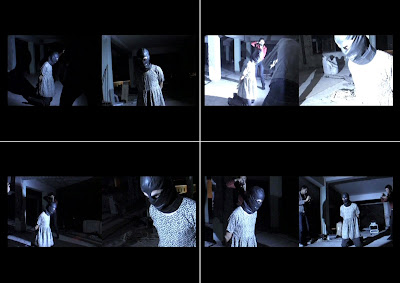
Esra Ersen – Growing Old (Dis)Gracefully, 2006
Unlike her former pieces focuses on a single person and produces her piece through her involvement with that person: Helen in her late 70's and MA student, living in Liverpool. Ersen introduces Helen the new and the trendy. Helen gets involved in the change not only through her outlook but also through her usage of the city. Liverpool one of the cities in the map of gentrification is a significant underlying reason for this work.
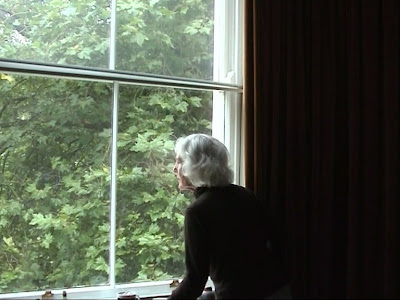
Artists: Nevin Aladag, Isil Egrikavuk, Ayse Erkmen, Esra Ersen, Ozlem Gunyol & Mustafa Kunt, Emre Huner, Sefer Memisoglu, Erinc Seymen, Asli Sungu
2. November 2008 : Kunstmuseum Bern, Switzerland
http://www.kinokunstmuseum.ch/content/read/thema169.html
4. November 2008 : Kunsthalle Basel, Switzerland http://www.kunsthallebasel.ch/events/filme#341
Program:
19:00 Opening Speech
19:20 – 20:20
Ayse Erkmen – Coffee, 2007
Coffee is revealing a session of coffee reading of the artist’s future in a highly symbolic and metaphorical sense, where the artist is trying to associate people, events and spaces through what she hears.

Nevin Aladag – Voice Over, 2006
Voice over is a compilation of sounds that Aladag has collected in Berlin. The songs sang by youngsters of lyrical associations appear on the same level of the sounds produced by wind or rain.
20:20 – 20:35 Break

video still: Faulty Salad Dressing, 2008
20:35 – 21:35
Asli Sungu – Faulty Window Cleaning, 2008
The piece displays the processes of perfection on house-holding. Window cleaning is one of the four series of videos Sungu has produced on the challenge she takes in order to fulfill what is expected from a woman.
Ozlem Gunyol & Mustafa Kunt – Section 1, 2005
The artists are recapturing scenes from a movie by Zeki Demirkubuz, titled Itiraf. The dialogue taken from the scenes of a break up of a young couple is fully taken in Section 1.
Sefer Memisoglu, Rendering Rome, 2008
Sefer Memisoglu works with film within the genre of film-making and video art. Memisoglu’s pieces provide a filmic experience whereas the continuity is mapped with contextualisation of existences. Rendering Rome is a prologue to a city in itself and as such. Today’s cities are rather megalopolises where they function as a hub of movement and encounter. In Rendering Rome, we gaze at an idea of a city like an object of some sort. The city is like an entity that belongs to us, that gets cleaned, polished, and ready to host the activities within. The tramways rendered through the night not only enable continuity of movement but also the pace of living. The night and the day of the city appear as a duality with the seen and the unseen, the visible and the invisible through the positioning of subjectivities. Rendering Rome positions the city more than a mere container of inhabitants but an activation ground of subjectivities.
Additionally, although the piece has been produced in Netherlands, it is titled in reference to another city: Rome, the first city that has been ever planned in human civilisation. The piece connects the idea of the first city and projects on today via abstraction of movement and free associations.

Erinc Seymen – Take #1, 2006
The piece is constructed by various camera angles from various cameramen. The person in the middle of all the action is wearing a mask and a dress. The whole is somehow indefinable, uncanny: the gender of the marked person, the reason of shooting his image in a dark loft,...

Esra Ersen – Growing Old (Dis)Gracefully, 2006
Unlike her former pieces focuses on a single person and produces her piece through her involvement with that person: Helen in her late 70's and MA student, living in Liverpool. Ersen introduces Helen the new and the trendy. Helen gets involved in the change not only through her outlook but also through her usage of the city. Liverpool one of the cities in the map of gentrification is a significant underlying reason for this work.


